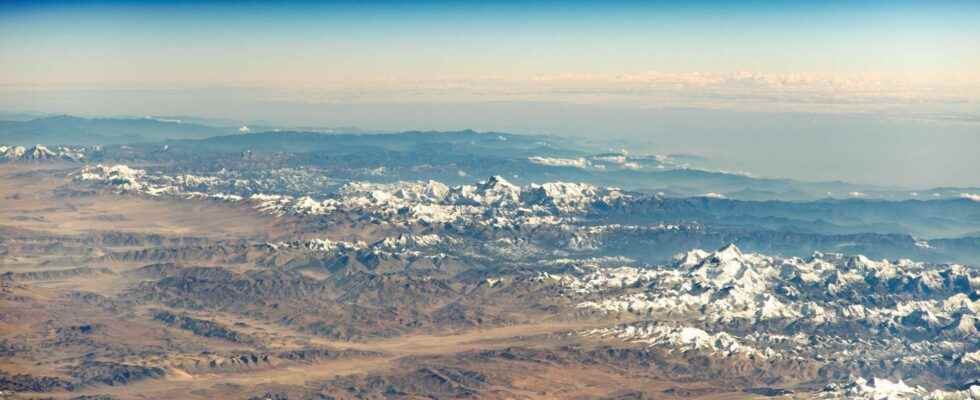By tracking zircons with a low lutetium content, Australian researchers have succeeded in identifying the formation, during the history of the Earth, of two “supermountains” rising more than 8 km and crossing an entire continent. These two episodes of orogeny would be linked to two key phases in the evolution of life on Earth.
You will also be interested
[EN VIDÉO] A billion years summarized in 40 seconds: plate tectonics Researchers have modeled the movements of tectonic plates over the past billion years.
The continents on the surface of the Earth have not always been arranged in the way we know today: they are in continual movementsubmitted to moving tectonic plates cutting through the earth’s crust. Although only moving a few centimeters per year, the movement of these plates has shaped and deformed the Earth’s surface throughout its history, leading to the existence of several supercontinents dislocated today.
When two tectonic plates meet, the rocks on the surface are gradually lifted over millions of years to form mountain ranges : this is called a orogeny. They can then continue to grow over several hundreds of millions of years until their progressive erosion leads them gradually to disappear from the surface of the Earth. Thus, tracing the existence of past mountain ranges is not easy.
Zircons to trace the history of the Earth
To reconstruct the history of the terrestrial mountains, the geologists generally study the minerals formed in the crust under the extreme pressure from masses overlying mountains. They mainly use zircon, a mineral formed under high pressure conditions and resistant to erosion, allowing it to be preserved intact long after its formation.
In their new studythe researchers focused more specifically on tracking zircons low in lutetium – suspected to form in the roots of very high mountains. Their results are astounding to say the least: they were able to identify the existence of two huge mountain ranges, rising more than 8 kilometers above the surface and extending nearly 10,000 kilometers across the continents. Such colossi, called “supermountains”, do not currently exist on the earth’s surface — one would have to imagine the Himalayan range placed end to end several times.
Of previous studies had already made it possible to identify the existence of the most recent supermountain, called the Transgondwanian supermountain, extending over the supercontinent Gondwana a little over 500 million years ago. On the other hand, the second identified supermountain, named supermountain Nuna (from the name of another older supercontinent) and which existed nearly two billion years ago, had never been detected before.
The erosion of mountains to boost the evolution of life?
In addition to having detected the existence of a new supermountain in the history of the Earth, the team of scientists made a second astonishing discovery: the existence of these two supermountains would be linked in time to two key phases in the evolution of life on Earth: the formation of the supermountain Nuna would coincide with the appearance of the first cells eukaryotes (nucleus cells of which plants and animals are made), while the formation of the Transgondwanan supermountain would coincide with thecambrian explosionthe appearance and diversification of complex animals.
But how are these supermountains related to the evolution of life? According to the scientists, it would not be the mountains themselves, but the products of their erosion which would have played a crucial role. The progressive erosion of these enormous mountainous masses would have poured immense quantities of nutrients in the oceans (such as the Iron where the Phosphorus), thus significantly boosting the biological cycles and allowing theemergence of greater complexity. Scientists also believe that the erosion of these supermountains would also have allowed theepisode oxygen in theatmospheremaking Earth even more hospitable to complex life forms.
Their research also confirmed earlier studies that found that the formation of mountain ranges on the Earth’s surface was largely halted around 1.7 billion years ago to 750 million years ago. Geologists refer to this period as the Boring Billion (or the “boring billion”), because the evolution of life seems to have been largely hampered at the same time. Thus, some scientists claim that the formation and erosion of mountain ranges play a crucial role in the evolution of life.
Interested in what you just read?
